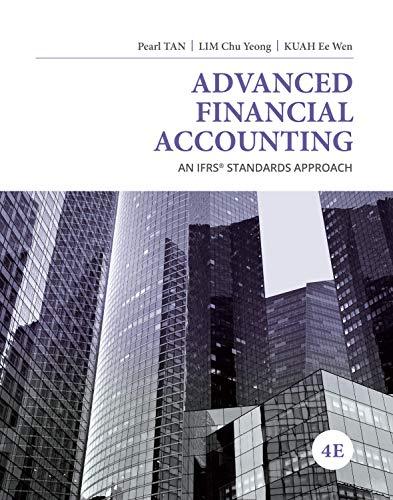Question
QUESTION 5 - Inventory and JIT As gyms and fitness centers reopen, they must follow strict guidelines for sanitation, social distancing, occupancy, and even more.
QUESTION 5 - Inventory and JIT
"As gyms and fitness centers reopen, they must follow strict guidelines for sanitation, social distancing, occupancy, and even more. Even if these facilities are considered safe by most standards, their patrons still may not feel comfortable, especially older adults, and others who are at a higher risk for COVID....So how do you maintain your fitness when you can't follow your usual exercise routine?
One solution is at-home workouts..[1]"Harvard Business Review
The RU Fitness Company (RU) makes home gym equipment that focuses on strength training. Due to the COVID pandemic, the company has seen a rise in demand for their equipment as local gyms close or patrons are not comfortable working out at a gym. Diego Madruga, owner and CEO of the company expects the current level of demand will hold steady for the next five years as he learns more people are opting to work out at home.
RU manufactures their equipment at its plant in Langley, BC. To prepare for both the short term and the future, Diego wants to review current plant operations and explore ways in which the company can become more efficient. He has hired you, as consultant, to assess the company's manufacturing and inventory practices and provide recommendations.
Current situation:
To assist with your analysis, Diego asked his cost accountant to summarize some of the key financial figures relating to inventory:
Carbon steel makes up 85% of RU's inventory value. Because of its strength, it is necessary to handle the long-term stress put on gym equipment. Annual requirements for carbon steel are 76,800 kilograms. It is purchased by the kilogram at an average cost of $0.71 per kg.
Carbon steel is ordered on a monthly basis from Majuba Steel Inc., a local importer of steel from overseas. RU works with a purchasing agent who contracts with RU to order in the steel from Majuba. The agent, who works away from RU's office, writes up the order on a paper document, faxes it to the supplier and follows up via phone to ensure the order is filled. She charges $390 per order. This is the only order cost incurred.
Annual costs of warehouse leasing, insurance, utilities, and management are $8.80 per kilogram of carbon steel.
RU's opportunity cost is 12%
Proposed JIT:
Diego is also considering implementing a just-in-time (JIT) manufacturing system to reduce RU's costs and be responsive to demand. He has already consulted with an industrial engineer to learn more about how to rearrange the shop floor to create a lean manufacturing environment. Costs and resulting benefits of implementing JIT (excluding inventory carrying and ordering costs) are as follows:
One-time cost to rearrange the shop floor to create manufacturing workstations is $440,000Retrain existing workforce for the JIT required skills is $60,000
Anticipated defect reduction is 30%. Currently there is a cost of quality defect assessment listed as $150,000 per year. This is considered to be an internal failure cost.
RU manufactures its products using a batch process. The setup time for each of the batches will be reduced by 40% under a JIT system. Current annual setup costs are $350,000.
A 20% premium on production supplies will be charged as supplies will be delivered on a more frequent schedule. Currently production supplies are $520,000 per year.
Required:
A. CURRENT SITUATION: To begin this analysis, you decide to assess the current situation as it relates to RU's ordering practices and carrying costs. Your initial thought is the company may be able to optimize its order and carrying costs using existing practices.
i.Given current ordering practices, what is the total annual relevant cost of ordering and carrying inventory.
ii.Using Economic Order Quantity, what is the optimal order size for carbon steel (in kilograms) RU should use to minimize total annual order and carrying costs.
iii.Calculate the savings incurred in ordering using the order quantity calculated in part (ii)
B.PROPOSED JIT. Diego informs you that the industrial engineer hired to assess RU's manufacturing system, suggests total inventory carrying costs can be reduced by 50% if inventory is ordered in quantities of 760 kilograms.
i.Explain to Diego the effect this will have on total inventory costs (carrying and ordering) and provide a potential solution to reduce total inventory costs. (Calculations are not required).
ii.Determine whether it is in the best interest of the RU Fitness Company to install a JIT manufacturing system.
Focus on:
Relevant manufacturing costs/savings (exclude inventory order and carrying costs) and the ability to show a return on the cost. (Remember to identify annual and onetime costs/savings)
The advantage and disadvantage of JIT for RU (minimum 1 each)
Show all calculations and provide a response to Diego which includes pertinent figures from your calculations.
Step by Step Solution
There are 3 Steps involved in it
Step: 1

Get Instant Access to Expert-Tailored Solutions
See step-by-step solutions with expert insights and AI powered tools for academic success
Step: 2

Step: 3

Ace Your Homework with AI
Get the answers you need in no time with our AI-driven, step-by-step assistance
Get Started


